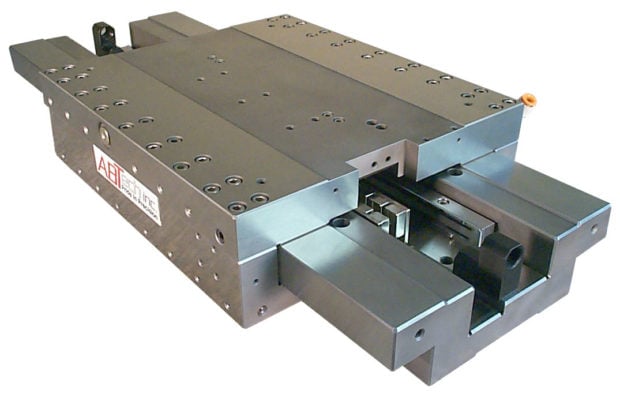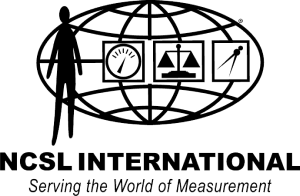
A linear stage is a motion control device used in many industrial applications. At ABTech, we design, engineer, and build linear stages—they’re one of the main categories of high-performance, precision motion machines we manufacture.
In this post, we’ll introduce the basics of linear stages, covering:
- How linear stages work
- Construction & major components
- How manufacturers use linear stages
- Critical design factors
Let’s first look at what linear stages are and what they do.
Linear Stage Basics
There are three major types of linear stages: air bearing, oil hydrostatic, and mechanical bearing. Linear stages move back and forth on a single axis; multi-axis designs combine multiple linear stages in different orientations to achieve many directions of motion.
Of the three types, air-bearing linear stages are the most precise. They use a film of air to separate moving surfaces so they aren’t susceptible to errors caused by friction and heat.
A linear stage typically helps a manufacturer do two things:
- Position a part along a path
- Create constant, smooth motion
A linear stage (also called a translation stage or linear slide) has three major components: the base, the carriage, and the rails.
Base – The base houses the motor, encoder, and other accessories. It’s a non-moving, fixed part that can be made of stainless steel, aluminum, or granite (depending on the application).
Carriage – The carriage is the moving or floating part of the linear stage. For an air-bearing linear stage, the carriage travels on a film of air.
Rails – The rails guide the movement of the carriage and determine the carriage's pitch, yaw, and roll. A linear stage will perform poorly if the rails aren’t manufactured and positioned to spec.
Industry Applications of Linear Stages
Linear stages are essential for manufacturers who require straightness measurement, linear positioning, scanning, or constant velocity. Air-bearing linear stages offer near-frictionless movement. The result is incredibly smooth motion, submicron positioning accuracy, and absolute repeatability.
Industries that use air-bearing linear stages include:
Optics
Using an air-bearing linear stage is key to consistently manufacturing high-performance lenses. The air bearing’s precision avoids choppy or inconsistent movement of the lens material against its shaping device, such as a diamond tip cutting tool.
Semiconductors
Accuracy is becoming more critical for semiconductor manufacturers as chips get smaller and denser. An air-bearing linear stage can position a chip exactly as needed for lithography or ion deposition to produce the required pattern on the semiconductor wafer.
Find more industry examples in our blog: Air Bearing Applications: Common Examples by Industry.
Linear Stage Design Factors
The applications for linear stages are generally similar across industries; however, each manufacturer’s situation is unique. At ABTech, we custom-design our linear stages for each client.
Some of the fundamental factors of design include:
- Weight – How heavy is the part that will sit on the linear stage?
- Footprint – Are there space restrictions for the machine?
- Speed – How fast must the carriage travel?
- Accuracy – What are the precision requirements?
- Orientation of motion – Will the carriage move horizontally, vertically, or both?
The material selection for a linear stage depends on the intended application. For example, accuracy measurement below the submicron level typically means using stainless steel because of its thermal resistance properties. However, lightweight aluminum construction may be a good choice in high acceleration and deceleration applications.
Linear Stages by ABTech
At ABTech, we design, engineer, and manufacture linear stages with air, oil, or mechanical bearings. Our machines come with linear motors, encoders, and drive amplifiers to provide a complete turnkey solution.
Instead of forcing you to choose from a catalog of pre-designed linear stages, we’ll work together to create a machine built for your specific application.
Ready to get started? Please fill out our Request a Quote form to contact an expert who’ll help explain the next steps.







